
This year marks the 15th anniversary of Open House New York, an annual celebration of architecture, urban design and public space that provides people with unparalleled access to architectural sites in New York. In honor of the weekend event, which takes place on October 14th and 15th, we recently curated a list of open access sites to check out. Now, we’re highlighting ten additional sites that do require Advanced Registration.
To whet your appetite, some of ONHY’s newly added advanced registration sites include The Bridge at Cornell Tech, one of the first three university buildings completed on Roosevelt Island; the historic Liggett Hall on Governors Island, a former military barrack, which will have its secret archway gymnasium open to the public for the first time; rare access to New York Transit Museum Archives, which contains thousands of artifacts telling the story of mass transportation in New York City; the American Copper Buildings, where visitors will tour the building’s newly completed skybridge and much more.
In partnership with Open House New York, Untapped Cities is also excited to announce a giveaway for a Weekend Passport, a VIP pin that gives the wearer and a guest front-of-the line access to as many as 150 participating sites. To enter the contest, see our Rafflecopter embed below. You can win entries by interacting with us on Instagram, Twitter, and Facebook! The giveaway will run until end of day October 7th, 2017.
In the meantime, here are 10 must-visit Advanced Registration sites to check out for OHNY Weekend 2017. Get your web browsers ready as registration opens at 11 a.m. on October 5th:
10. St. John’s the Divine Vertical Tour
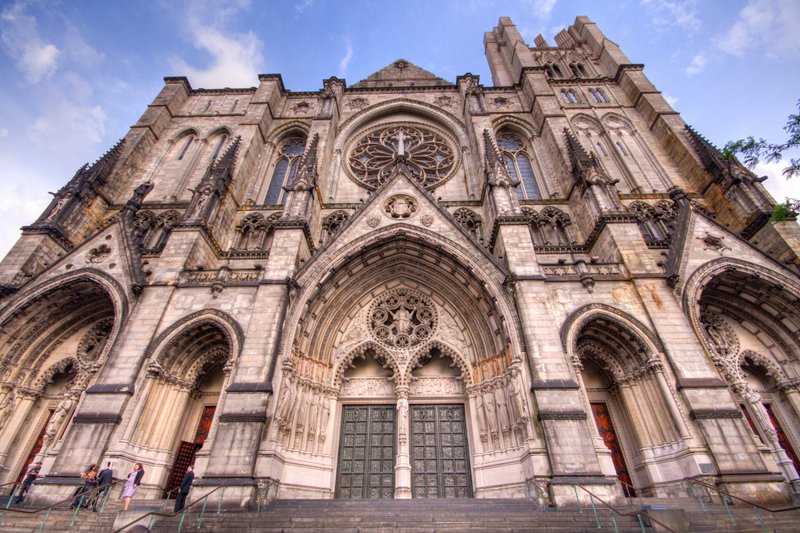 Image via Wikimedia Commons: Kripaks
Image via Wikimedia Commons: Kripaks
Saint John the Divine is one of the few places left in New York City that allows visitors to access to its roof. In addition to offering some insight into the Cathedral’s history and iconography, its behind-the-scenes vertical tours allow visitors to discover the Cathedral’s attic, come face to face with stained glass windows and get a spectacular, sweeping view that, on a clear day, can include the spire of One World Trade Center. To reach the top of the world’s largest cathedral, visitors must climb more than 124 feet through spiral staircases.
9. TimesSquare_Portal Tours
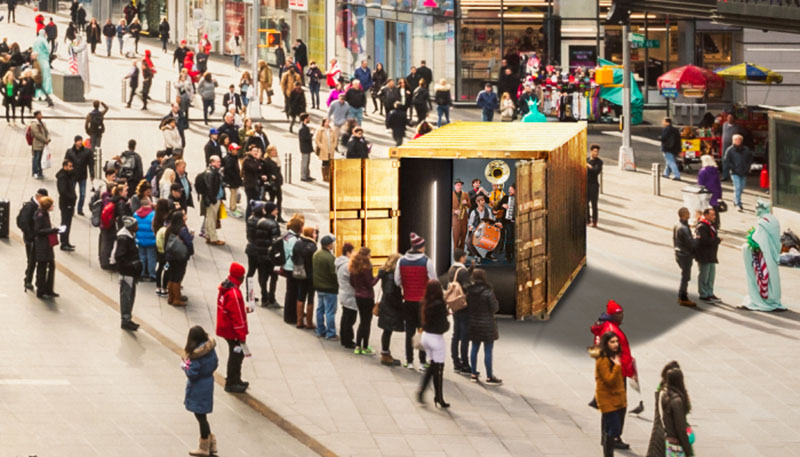 Image via TimesSquare_Portal. Rendering courtesy of Shared_Studios; original photo by Michael Grimm for Times Square Alliance
Image via TimesSquare_Portal. Rendering courtesy of Shared_Studios; original photo by Michael Grimm for Times Square Alliance
In partnership with Shared_Studios, Times Square Arts is bringing TimesSquare_Portal to one of New York City’s busiest commercial hubs: Times Square. The interactive public art installation will run from October 10th to November 21st, and features gold shipping containers equipped with immersive audio-visual technology. During the span of seven weeks, visitors are invited to enter the containers, where they will come “face-to-face, live and full-body” with someone in an identical space someone else in the world (including in countries like Afghanistan, Germany, Honduras, India, Iran, Iraq, Jordan, Kazakhstan, Kenya, Mexico, Myanmar, Pakistan, Palestine, Panama, Rwanda, Spain, the United Kingdom, the United States, Vietnam and Yemen).
The “portals” will exist in a variety of locations such as refugee camps, art museums and public plazas. Each week of the installation will focus on a different theme ranging from food to identity. Free timed reservations can be booked at www.TimesSquarePortal.com, but walk-ins are welcome. Although the project is open access, Open House New York is also offering advanced registration tours of TimesSquare_Portal.
8. The Interference Archives
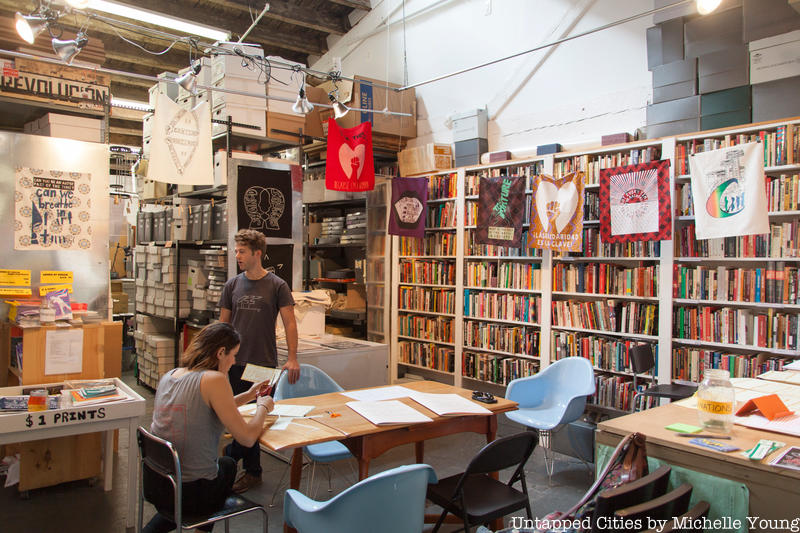
The Interference Archive in Gowanus, Brooklyn, a rather hidden spot, seeks to capture the relationship between social movements and cultural production. The collection contains materials from social movements all around the world, and extends far beyond the usual suspects like anarchism or peace movements. Here you can also find information about more obscure topics like punk feminism and bike advocacy. And it’s not all lefty material – there is a section on the Tea Party and white supremacy – not that the founders support those ideologies.
There are the things one would expect in an archive – stacks of books and ephemera used in social movements (buttons, posters, T-shirts, bumper stickers, photographs, even board games). But there is something decidedly old-school and laid back about this archive founded by a Brooklyn couple from their own personal collection.
7. DSNY Salt Shed
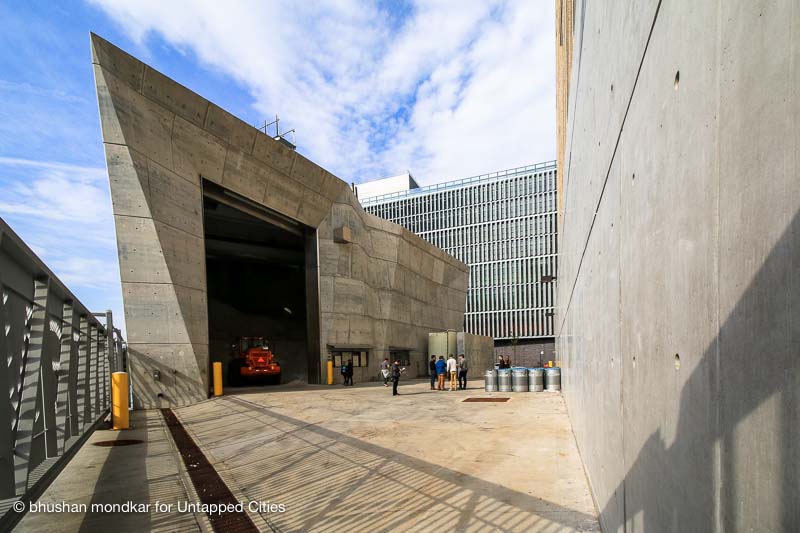
We previously had the chance to visit inside the New York City Department of Sanitation (DSNY)‘s new garage and salt shed complex in Hudson Square, Tribeca, designed by WXY architecture + urban design and Dattner Architects. While initially facing opposition from the community, who saw the new sanitation center as a sore thumb in an otherwise high-end neighborhood, the Spring Street Garage-and-Salt Shed currently serves 300,000 residents in Manhattan Community Districts 1, 2, and 5 with 250 employees. The modern facility provides innovative, sound functionality behind an architecturally modern facade.’
Adjacent to the garage building is a 70-foot, architecturally stunning, crystalline shaped salt shed. With a price tag of $20 million, this 5000-ton capacity shed has a few fascinating features that distinguish it from the 39 other salt sheds around the city that are stocked throughout the winter. While the salt crystal shape of the structure is a remarkable piece of public art that puts all other salt sheds to shame, the unorthodox design actually stems from engineering work. The walls of the shed are taller on the side facing the water, allowing for the salt to settle at its natural slanted angle of 32 degrees, also called angle of repose. This unique way of storage allows for trucks to drive up one side, dump salt more conveniently onto the mound, which will then settle in its own stable way.
6. Manhattan Municipal Building Cupola
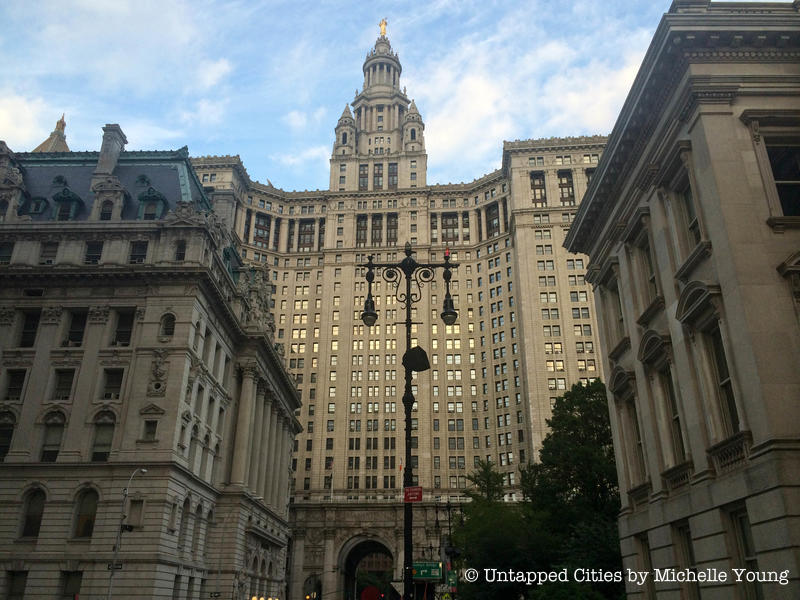
In 1893, the city of New York began renting spaces for government offices but it soon became clear that a city-owned building would be a more practical financial option over the long run. Twelve architectural firms submitted designs for the future building and William Kendall, a skilled architect who worked for McKim, Mead and White, was selected to design it.
Built in 1914 and costing an estimated $15 million to construct, the Manhattan Municipal Building was one of New York City’s early skyscrapers. It stands at 25 stories and 580 feet high, making it the fourth tallest in New York City at the time, behind The Woolworth Building, The Met Life Tower and The Singer Building.
A fun fact: the striking building was designed from a rejected sketch of Grand Central Terminal.
During Open House New York, its rarely accessible cupola at the top of the building will also be open, providing 360° views of Lower Manhattan to a select (lucky) few.
5. Masonic Hall

We’ve always been curious about the Freemasons, and even more so about the Grand Lodge of New York (Grand Lodge of Free and Accepted Masons of the State of New York). We previously toured their Masonic Hall on 23rd street in the Flatiron District. The building, completed in 1911, features 13 beautiful Lodge rooms, a majestic, 1,000-seat theater and a Masonic library and museum. We were shocked to learn that each strikingly ornate room is actually all painted plaster: from imitation stone to reliefs to frescoes, we were certainly tricked by Chavez’s manipulation of plaster to resemble high quality materials.
Check out more photographs from inside the Grand Lodge of Masons here.
4. The National Arts Club
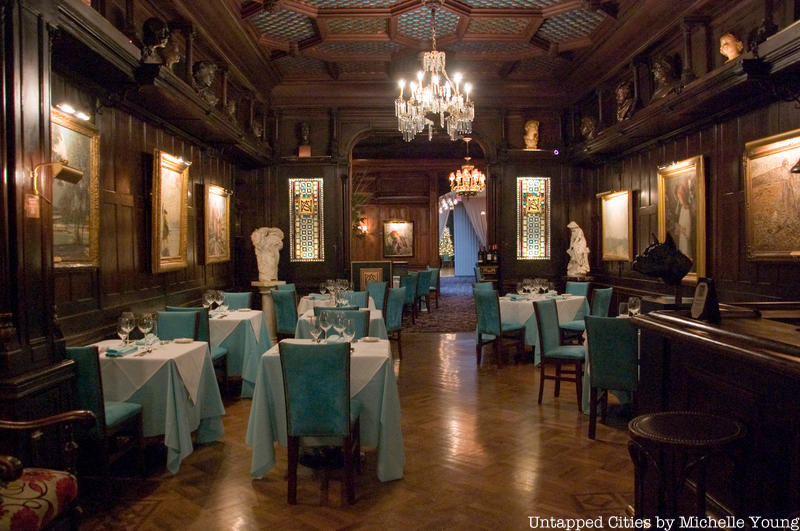
Located next to the similarly stately The Players Club, The National Arts Club is housed in the former Samuel Tilden Mansion. Tilden was the 25th Governor of New York and had access to the best architects and designers of the era. He hired names like Calvert Vaux, of Central Park fame, and John LaFarge to transform and combine two simpler brownstones into the more opulent place you see today. Vaux took the original facade, reclad it in sandstone and added bay windows and floral ornamentation. LaFarge added stained glass windows inside and Donald McDonald created an impressive stained glass dome.
In 1906, the National Arts Club moved into the Tilden Mansion from its original 34th Street location when a larger premises was necessary. The mission of the National Arts Club is to “stimulate, foster and promote public interest in the arts and educate the American people in the fine arts.” These days the club serves multiple functions for members and non-members. There are two galleries for rotating exhibitions, a dining hall with a great prix fix lunch menu and dinner, a bar, and multiple lounge areas. There are numerous subcommittees dedicated to various fields of art, including architecture, film, culinary, fashion, theater arts, literary, music and archaeology.
3. NYC DOT Sign Shop
Video via NYC DOT Youtube
Ever wonder what goes into the making of the city’s signage? In this behind-the-scenes video, filmmaker and photographer Robert Hooman takes us into the DOT Sign Shop warehouse, based in Maspeth Queens. There, a dedicated crew fabricates 9,000-12,000 signs a month for all five boroughs. This includes everything from large highway signs to Alternate Side Parking signs — all of which are made entirely in-house and by hand.
2. New York Transit Museum Archives
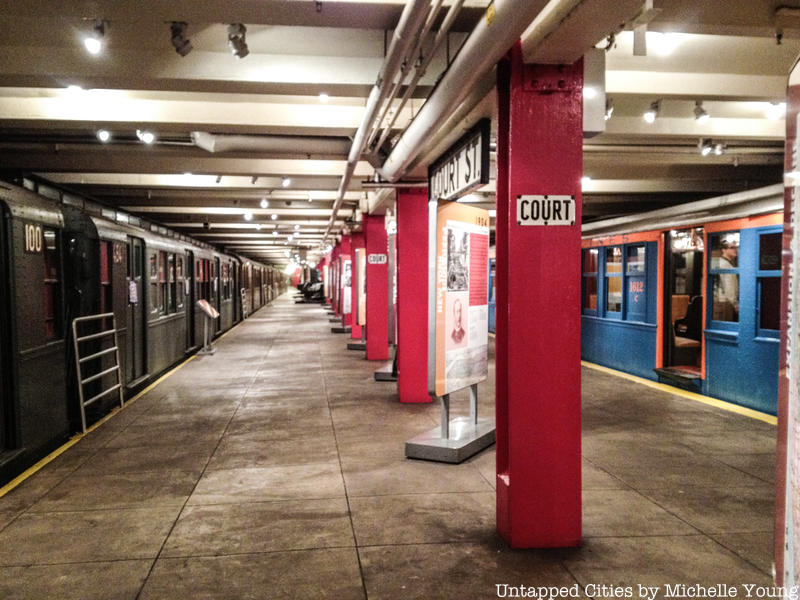
One of Open House New York’s newly added sites, Brooklyn’s New York Transit Museum Archives harbors the most extensive collection of public transportation materials in the United States. From information about horse-drawn carriages and elevated railroads to our extensive subway system, it holds over 150,000 photographic prints and original negatives, 15,000 original drawings, books of administrative records/reports and thousands of other artifacts that all help to tell the story of mass transportation in New York City
The New York Transit Museum Archives is located in the Transit Authority building at 130 Livingston Street.
1. Liggett Hall on Governors Island
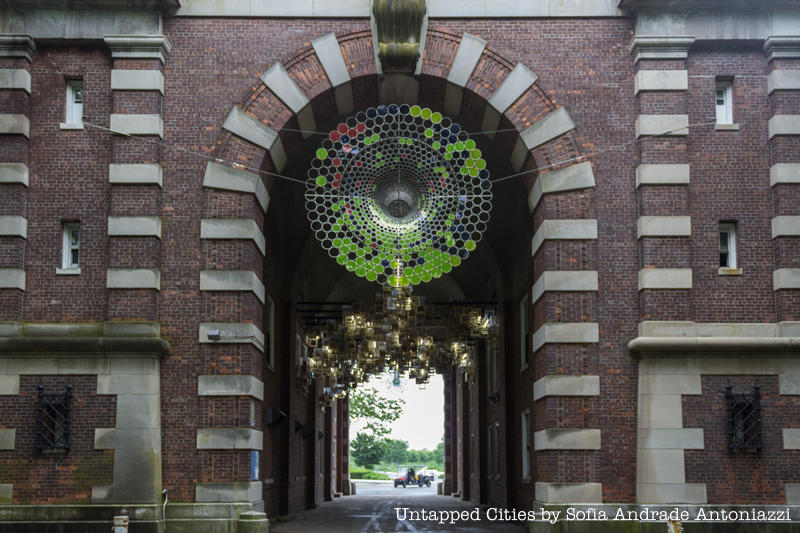
The boundary to the southern half of Governors Island is marked by the stately Liggett Hall — a former military barrack that is as long as the Chrysler Building is tall. (Construction workers at the site keep their distance from the building; it is said to be haunted.) Designed by McKim, Mead & White, and built in 1929 at Fort Jay on the Island, the post was designed to house an entire army infantry. Today, it serves as a centerpiece of Governors Island Park.
For Open House New York, its secret archway gymnasium will be open to the public for the first time.
Win an Open House New York VIP Weekend Passport from Untapped Cities and look back at the 10 Must-Visit Open Access Sites For NYC’s OHNY Weekend 2017 (No Reservations Needed).





